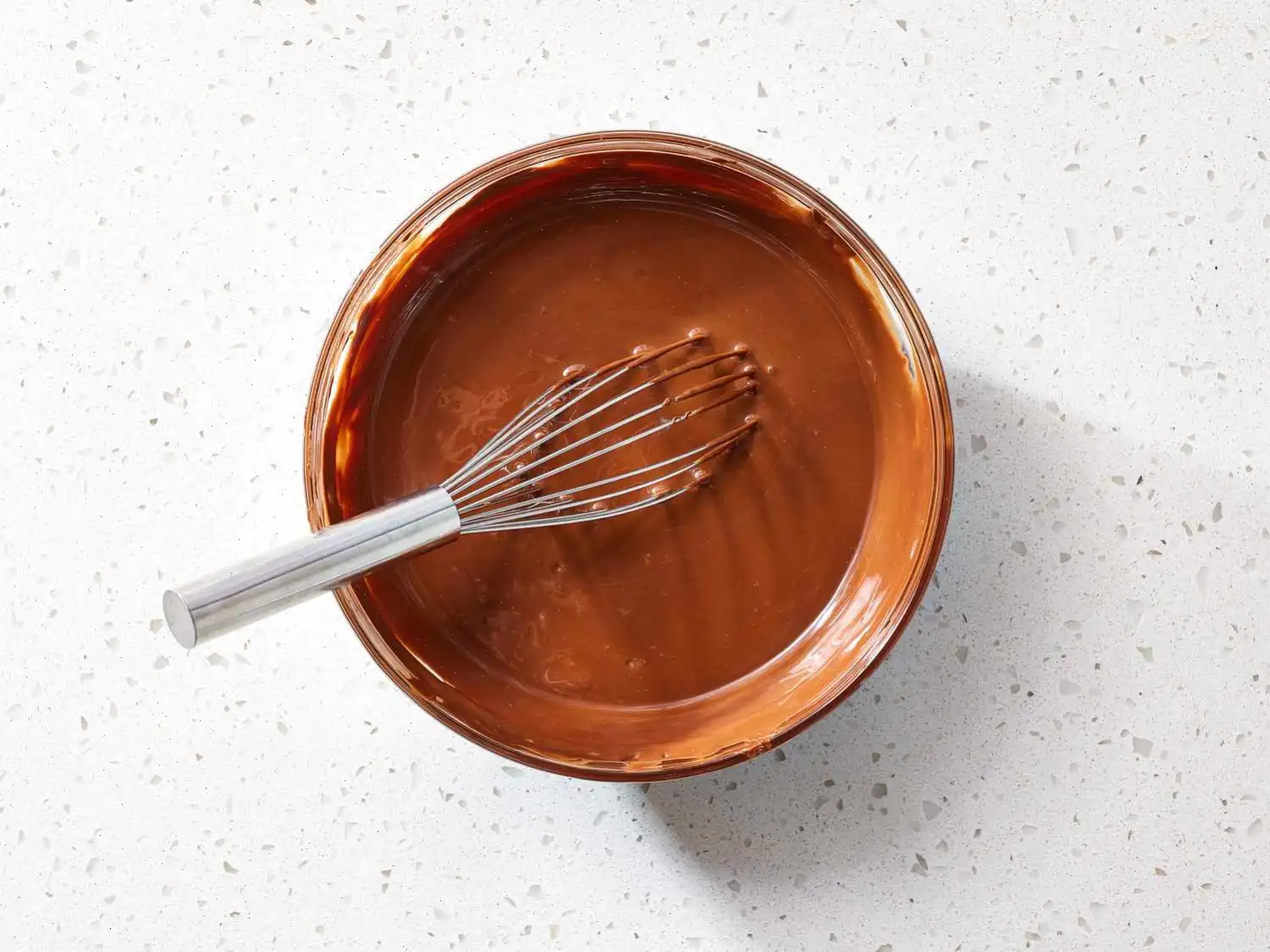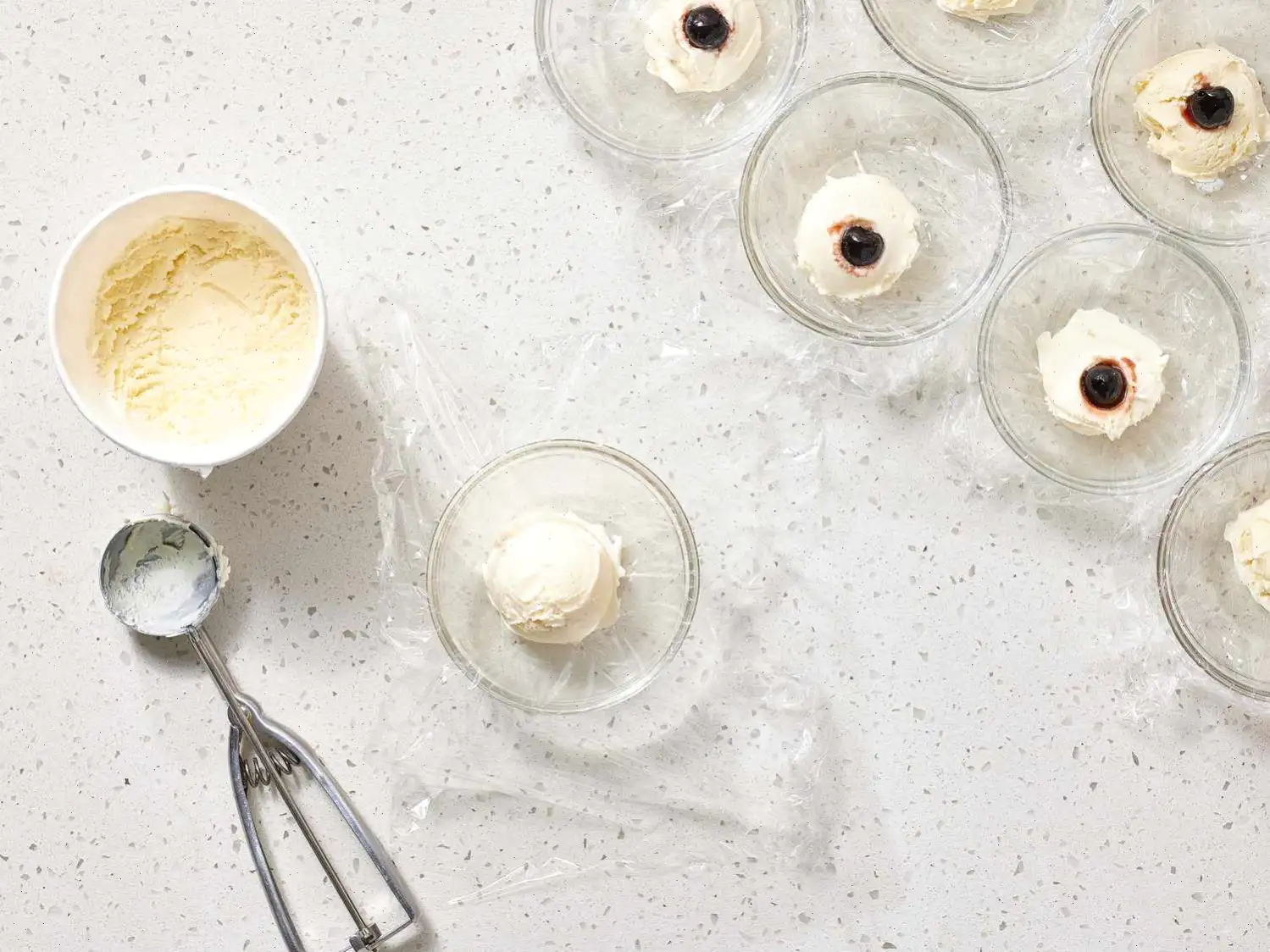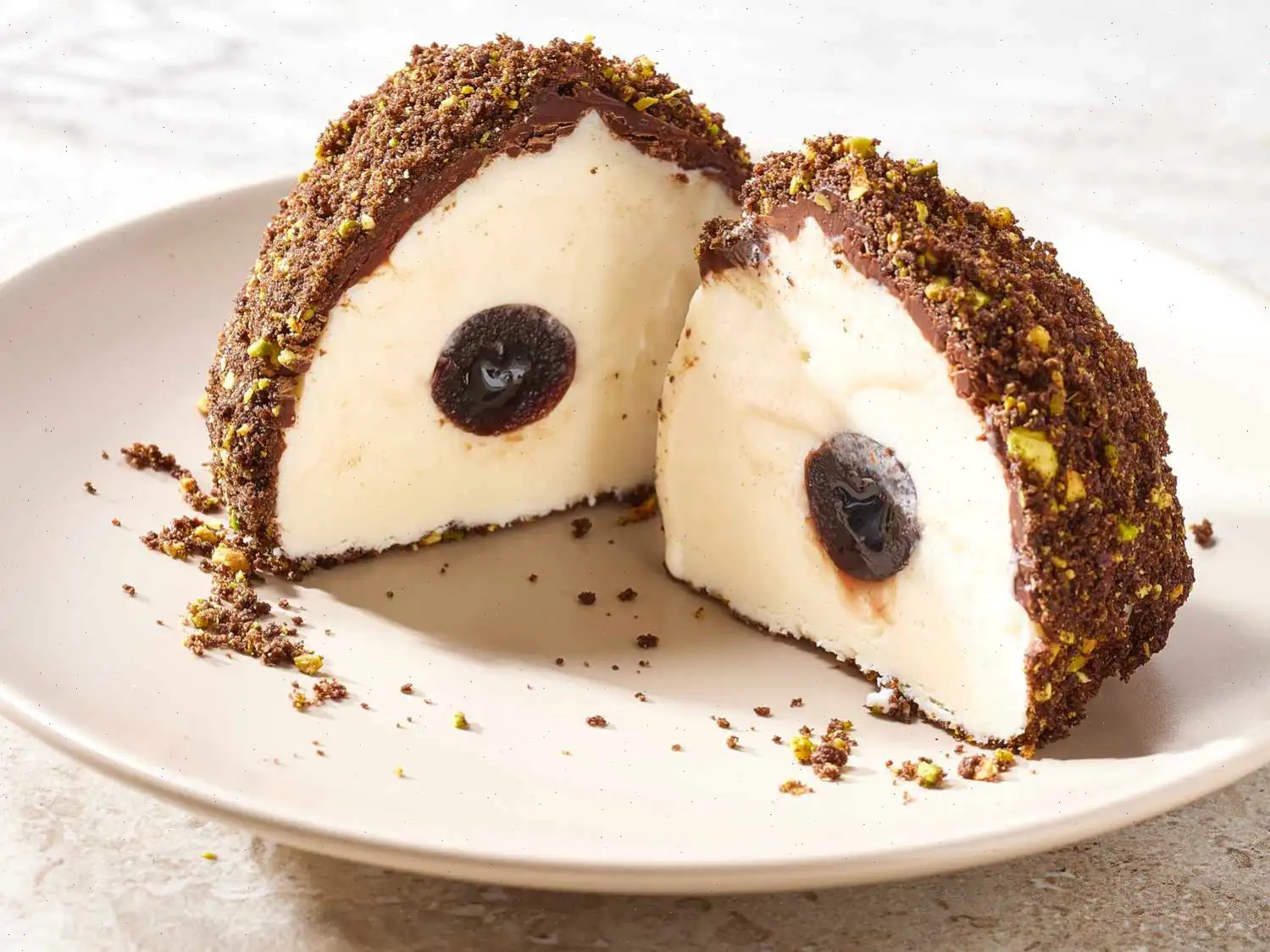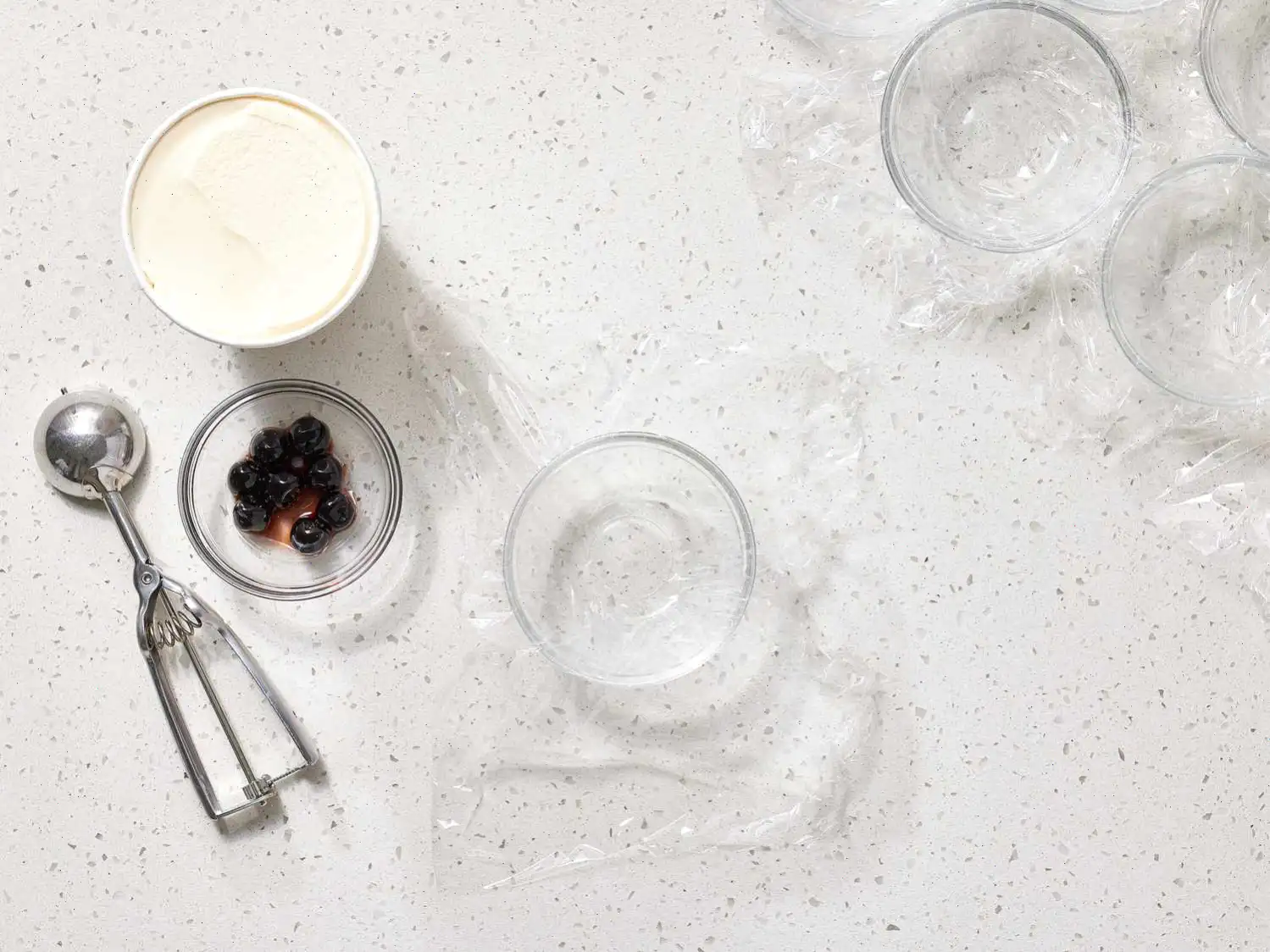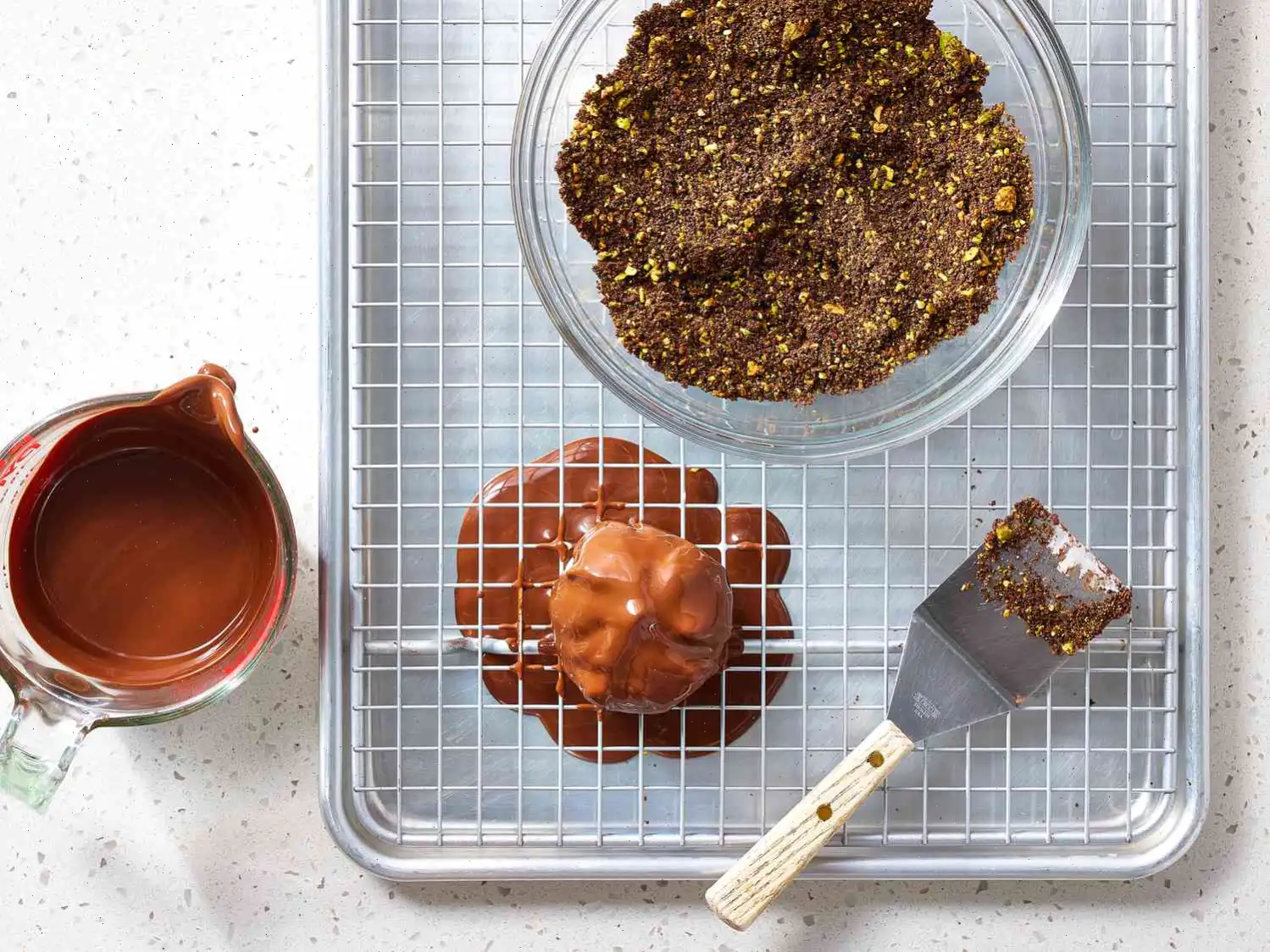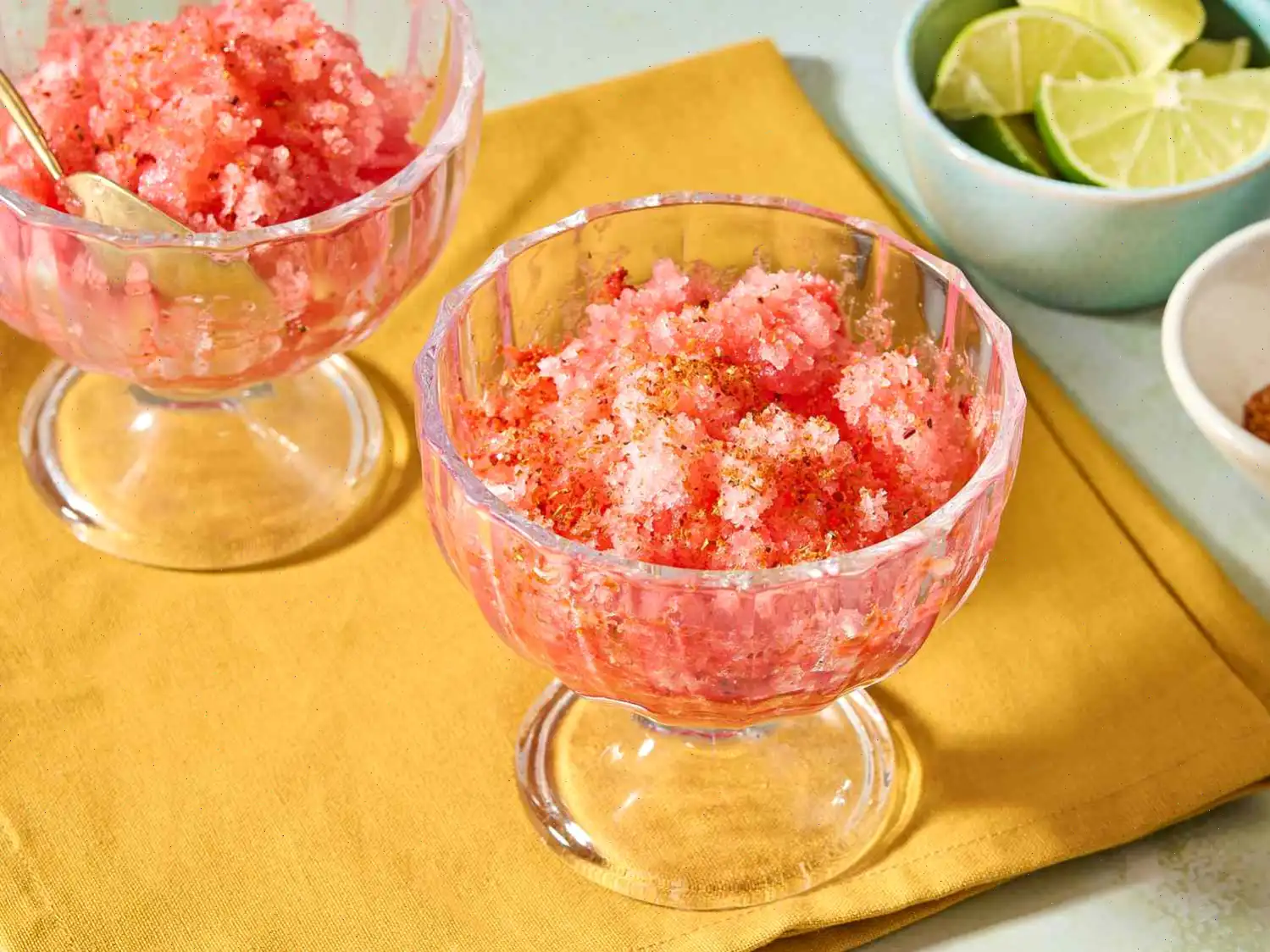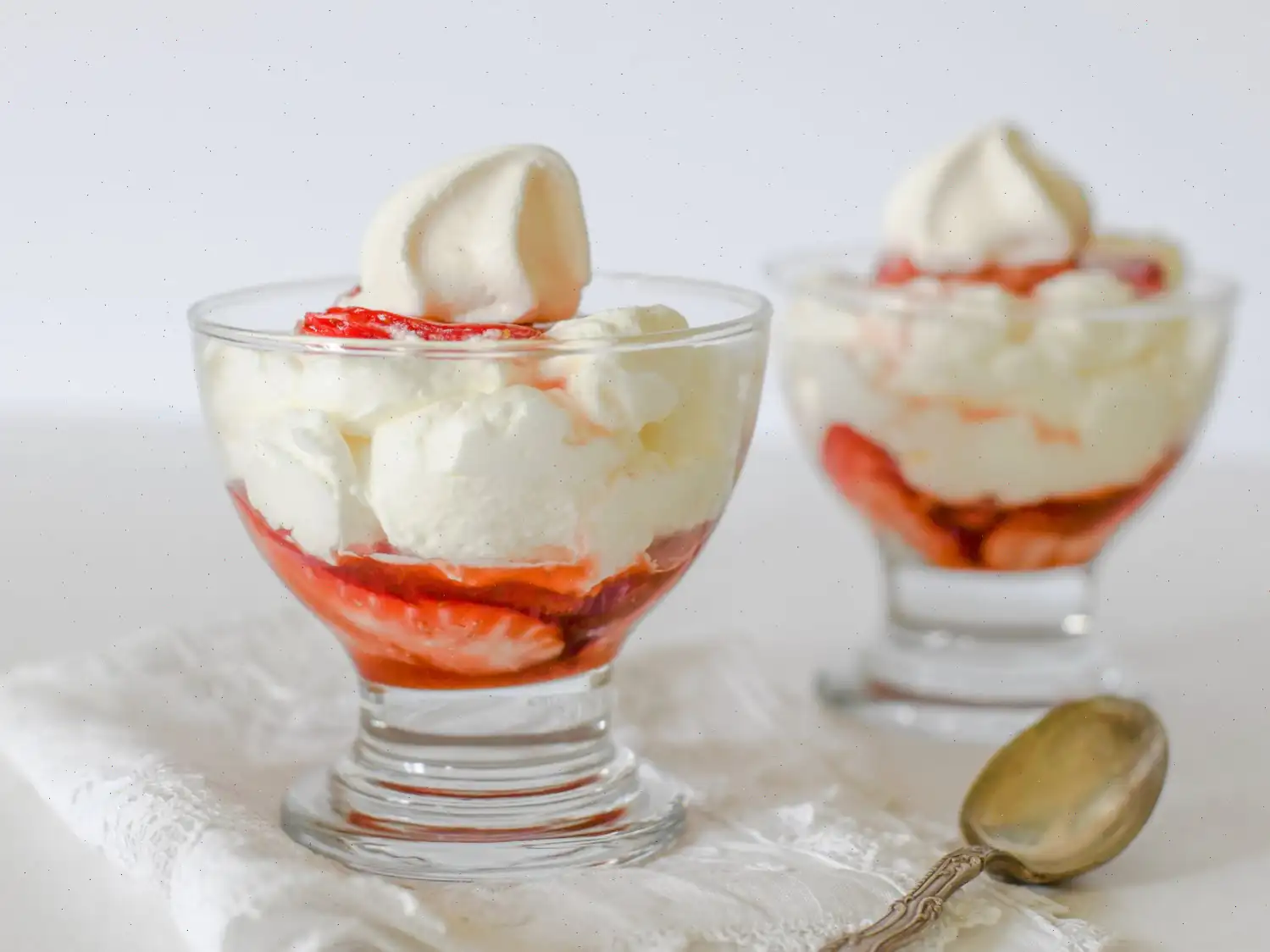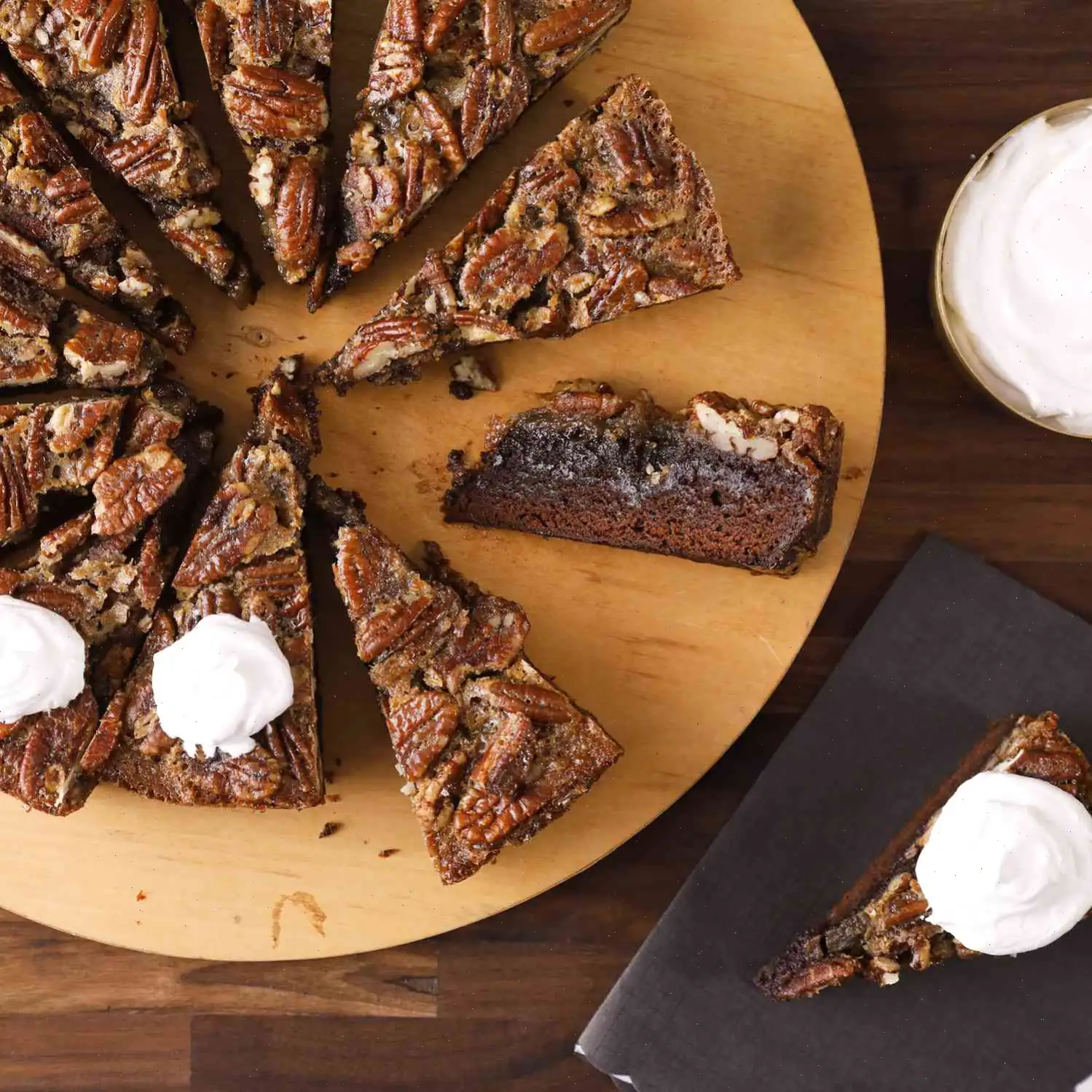
Tartufo Recipe
Ingredients
This recipe was developed at its original yield. Ingredient amounts are automatically adjusted, but cooking times and steps remain unchanged. Note that not all recipes scale perfectly. Original recipe (1X) yields 8 servings.
- 1 quart vanilla ice cream (such as Haagen Dazs)
- 8 maraschino cherries (such as Luxardo)
- 2 cups semisweet chocolate chips
- 5 tablespoons unrefined coconut oil
- 36 chocolate wafer cookies (such as Deweys Bakery) (optional)
- 1/2 cup salted roasted pistachios (optional)
Directions
- Gather all ingredients.
- Let ice cream stand at room temperature until slightly softened, about 10 minutes.
- Line 8 small bowls with plastic wrap, leaving a 3-inch overhang.
- Using a 2 oz. (1/4-cup) ice cream scoop, place 1 scoop of ice cream into the bottom of each bowl.
- Gently press a maraschino cherry into the top of each ice cream scoop, then top each with another 2 oz. (1/4-cup) scoop of ice cream.
- Working with 1 bowl of ice cream at a time, gather the overhanging plastic, wrap it up around the ice cream, and gently twist it to form a ball. Freeze until the ice cream is firm and set, about 2 hours.
- Place chocolate chips in a large microwave-safe bowl and microwave on HIGH in 30-second intervals, stirring thoroughly between intervals, until melted (3 to 4 minutes total). Whisk in coconut oil until the oil is completely melted and the mixture is combined. Let cool slightly at room temperature, about 10 minutes.
- Meanwhile, pulse cookies and pistachios (if using) in a food processor until finely ground, about 15 quick pulses. Transfer to a shallow bowl, and set aside at room temperature.
- Working with 1 ice cream ball at a time, remove the ice cream ball from the freezer. Remove plastic wrap and place the ice cream ball on a wire rack set inside a rimmed baking sheet.
- Pour the chocolate mixture over the ice cream ball, allowing it to thinly coat the top and sides.
- If coating in the cookie mixture, quickly and carefully invert the chocolate-coated ice cream ball into the cookie mixture, rolling it until evenly coated.
- Transfer the coated ice cream ball to a clean wire rack set inside a large, rimmed baking sheet in the freezer. Repeat the process with the remaining 7 ice cream balls, returning to the freezer after each one.
- Freeze until set, about 1 hour, or until ready to serve.
Nutrition Facts (per serving)
- Calories: 428
- Total Fat: 29g (37% DV)
- Saturated Fat: 19g (96% DV)
- Cholesterol: 29mg (10% DV)
- Sodium: 58mg (3% DV)
- Total Carbohydrate: 45g (16% DV)
- Dietary Fiber: 3g (12% DV)
- Total Sugars: 39g
- Protein: 4g (8% DV)
- Vitamin C: 1mg (1% DV)
- Calcium: 100mg (8% DV)
- Iron: 1mg (8% DV)
- Potassium: 309mg (7% DV)
* Percent Daily Values are based on a 2,000 calorie diet. Your daily values may be higher or lower depending on your calorie needs.

The Fascinating World of Tartufo
Tartufo is a classic Italian dessert with a rich history and a distinctive presentation. Originating in the southern Italian region of Calabria during the 20th century, this frozen treat was initially created as a luxurious alternative to traditional gelato. The name Tartufo translates to truffle in Italian, inspired by its round, chocolate-coated appearance, which resembles the prized truffle fungus. Its invention is often credited to Giuseppe De Maria, a pastry chef from Pizzo, who first combined ice cream, a cherry center, and a chocolate coating to create a visually striking and indulgent dessert.
Regional variations of Tartufo are common in Italy. While the original Pizzo version typically uses a combination of chocolate and hazelnut or coffee-flavored ice cream, northern regions like Tuscany and Lombardy often experiment with local flavors such as pistachio, hazelnut, or even limoncello-infused ice cream. In some areas, Tartufo is coated in cocoa powder or crushed nuts instead of chocolate, giving each region its own signature touch. The flexibility in flavors and coatings reflects the Italian tradition of adapting recipes to local ingredients and tastes.
Compared to similar desserts, Tartufo stands out for its layered structure and central filling. Unlike a simple ice cream scoop or a bombe glace, Tartufo usually contains a hidden core of fruit, liqueur, or nut paste, enveloped in ice cream and then encased in chocolate. This layered complexity distinguishes it from other frozen desserts like semifreddo, which is typically softer and lacks a firm chocolate shell, or profiterole-based desserts, which rely on choux pastry instead of ice cream as the main component.
Traditionally, Tartufo is served in elegant settings, such as fine dining restaurants, gelaterias, or special occasions at home. It is often presented individually on small plates, sometimes garnished with additional nuts, chocolate shavings, or fruit coulis. Its striking appearance makes it a popular choice for festive celebrations, including weddings, holidays, and formal dinner parties. The combination of smooth ice cream, rich chocolate, and a surprise center creates a memorable sensory experience for diners.
Several interesting facts highlight the cultural significance of Tartufo. The town of Pizzo in Calabria celebrates its creation with festivals and competitions dedicated to perfecting the dessert. Originally, Tartufo was intended to mimic the rare and expensive truffle in both appearance and exclusivity. Over time, it became more widely available, yet artisanal Tartufo still maintains its reputation as a premium dessert. Additionally, modern adaptations sometimes include vegan or gluten-free versions, demonstrating how this classic Italian treat continues to evolve while retaining its iconic essence.
You can listen to this recipe in AI audio format. Simply click the play button below to listen to the content in a format that suits you best. It’s a great way to absorb information on the go!
FAQ about Tartufo Recipe
Comments
Benjamin Phillips
08/17/2024 09:02:18 PM
Bro, I can’t believe I made this myself.


